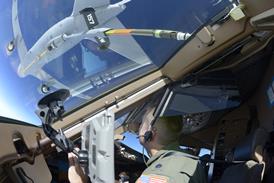Asia's main airline lobby group is forecasting only a modest improvement in the cumulative profitability of its members in 2007 as it expects margins to remain tight.
The Association of Asia Pacific Airlines (AAPA), which represents 17 major airlines from the region, made the prediction at its annual meeting of member airline chief executives.
Director general Andrew Herdman told delegates that "expectations for 2007 are for only modest improvements on this year's results". This is despite the fact that some of the group's loss-making members are hoping to return to profitability next year as a result of restructuring initiatives.
Herdman says: "Asia Pacific airlines have generally managed to remain profitable, although margins have been under pressure as a result of fares not keeping pace with fuel costs. Their profitability has been in something of a downtrend."
He says the AAPA's member airlines have been responsibly matching capacity growth to growth in demand. But "there is a risk new aircraft deliveries over the coming years could reverse the upward trend in average load factors, and put further competitive pressure on fares. Airline management will continue to face these and doubtless other business challenges in 2007 and beyond".
While there are notable loss-making exceptions such as Garuda Indonesia, Malaysia and Japan Airlines, AAPA members as a group have continued to financially outperform their counterparts in other parts of the world in recent years. However, Herdman says declining margins have been seen since the AAPA membership posted record profits in 2004, and he suggests this is unlikely to shift radically any time soon.
In fiscal year 2005-6 AAPA members recorded a net profit of $1.1 billion, representing a sharp drop of $2.5 billion over the 2004-5 result. Operating profit fell by $2.3 billion to $1.6 billion, despite operating revenues increasing 8.3%. Fuel costs were largely to blame, contributing to the 12.4% increase in overall operating costs. Fuel costs increased 43% overall, accounting for 26% of total expenses.
While profits were down, traffic and capacity reached record highs in 2005-6, says the AAPA, "albeit with modest rates of growth". Break-even load factor increased 2.3 points to 66.7%, however, as unit costs increased 8.3%, while yield improved 4.7%.
Overall, Herdman says AAPA members remain generally positive about future prospects. "One measure of confidence in the future can be seen in the volume of orders for new aircraft placed by carriers in the region," he says.
Source: Airline Business























